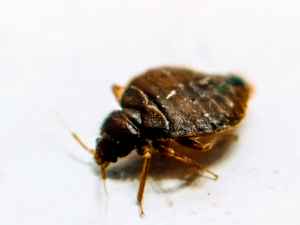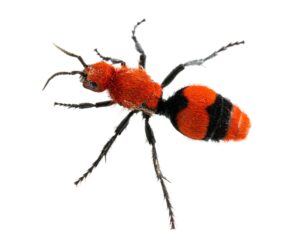Home / Blog / Understanding the Differences: Mice vs. Rats
Understanding the Differences: Mice vs. Rats

Scientifically reviewed by Rachel Maldonado
-Published on June 10, 2024
-Updated on December 3, 2025
When it comes to pests, mice and rats are often the first critters that come to mind. While they might look somewhat similar at first glance, these two rodents have distinct differences that set them apart.
Whether you’re a pest control enthusiast or just someone trying to rid your home of unwanted guests, understanding these differences is key to successful control. Here’s why.
Physical Appearance

One of the most noticeable differences between mice and rats is their size. Mice are typically small, measuring around 2.5 to 4 inches in body length, not including their tails, which can add another 3 to 4 inches. They usually weigh between 0.5 to 1 ounce.
In contrast, rats are much larger, with body lengths ranging from 8 to 11 inches and tails that add another 5 to 9 inches. Rats can tip the scales at anywhere from 8 to 19 ounces.
Mice generally have light brown or gray fur with slightly lighter underbellies. Their ears are large relative to their heads, and their eyes are small. Rats, on the other hand, come in various shades of brown and black, with some having lighter underbellies as well. Rats have thicker, more robust bodies. Their feet can be used to determine the difference as well – mice have relatively small feet and all rats will have large feet.
Another significant difference is their tails. A mouse’s tail is thin, long, and covered in fine hair. It’s almost equal in length to its body. In contrast, a rat’s tail is thick, and sometimes shorter relative to its body size, though not always, and has a scaly texture. The tail’s appearance is one of the easiest ways to distinguish between the two.
Behavior and Habitat
Mice are highly curious creatures. They are known for their exploratory nature and will investigate new environments readily.
Mice often build nests (usually made of soft materials like shredded paper, fabric, or insulation) close to their food sources, typically within 10 to 30 feet.
Rats, however, are more cautious and tend to stick to familiar routes and environments. Their nesting habits are more complex; some rat species build elaborate burrows or nests, often underground. Rats can travel up to 300 feet from their nests in search of food.
Both mice and rats are nocturnal, meaning they are most active during the night. However, their behaviors during this time can differ. Mice are more likely to explore and be seen scurrying around in search of food. Rats, being more cautious, tend to stay hidden and use established pathways to move around.
Feeding Habits
Mice are omnivorous and will eat almost anything, but they have a preference for grains, fruits, and seeds. They tend to nibble at their food, leaving behind small, scattered droppings. They’re often considered “nibblers,” meaning they eat small amounts of food, but frequently.
Rats, while also omnivorous, have a much more diverse diet. They’re scavengers and will eat anything from grains to meat. They consume larger quantities of food in one sitting compared to mice, but are also known to hoard food, storing it in their nests for later. Their droppings are larger, about the length of a raisin, and can be found in clusters.
Signs of Infestation
As previously mentioned, the size and shape of droppings can help identify whether you have a mouse or rat problem. Mouse droppings are small, about the size of a grain of rice. Rat droppings are larger.
Both mice and rats have strong teeth that continuously grow, requiring them to gnaw on objects to keep them trimmed. Mice leave small, fine gnaw marks on food packaging and household items. Rats, with their larger teeth, leave more substantial chew marks.
If you hear scratching or scurrying sounds within your walls or ceilings mostly at night, you might have an infestation of either rodent. Mice produce lighter, more frequent noises due to their smaller size. Rat noises are louder and less frequent but can be more disturbing due to their larger size and strength.
Control Measures for Mouse vs. Rat Infestations
Preventing an infestation is always easier than dealing with one. Here are some tips to keep mice and rats at bay:
- Seal Entry Points: Both mice and rats can squeeze through tiny openings. Inspect your home for gaps, cracks, and holes, and seal them with caulk or steel wool.
- Keep Food Secure: Store food in airtight containers and keep your kitchen clean. Avoid leaving pet food out overnight.
- Eliminate Hiding Spots: Clutter provides hiding places for rodents. Keep your home tidy and store items off the floor.
If you already have an infestation, trapping and baiting are effective methods for control, with snap traps commonly used for both mice and rats.
For a more humane approach, live traps are available, allowing you to release the captured rodents elsewhere. Tamper-resistant bait stations with rodenticides can also be used, but should be handled with care to avoid accidental poisoning of pets or children.
If you’re dealing with a severe or persistent infestation, it’s time to call in the professionals. Pest control experts have the knowledge, tools, and experience to effectively eliminate rodents from your home and prevent future infestations.
Know Your Rodent and Get Help with Hawx
While both mice and rats can cause damage and pose significant health risks, knowing how to prevent and control them will keep your home safe and rodent-free.
Ready to take back control? Join our satisfied family of customers at Hawx Pest Control. Your home deserves the best protection, and Hawx Pest Control Virginia Beach VA, is here to provide it.
Related Articles
Visit our blog to learn more.
→







